COMMUNICATION BREAKDOWN : The Failure to Connect in Jeannot Scwarz’s BUG (1975)
Enigmatic film producer William Castle, the master of cinematic showmanship who employed gimmicks to the screenings of his movies primarily throughout the fifties and sixties, took hold of writer Thomas Page’s book “THE HEPHAESTUS PLAGUE” and turned it into an elegant and good looking film entitled BUG. This would become the last film he would be involved with, as the cigar-chomping legend sadly died of a heart attack in 1977 aged sixty three. Castle made a career out of giving audiences fun scares with amazingly thrilling horror movies like THE TINGLER (1959) with Vincent Price and STRAIT-JACKET(1964) starring Joan Crawford, who would also act as the film’s consultant ensuring that she had script approval, chose the cinematographer, took a percentage of the profits made from the film and had a final say in how the motion picture would end. Following such success from that aforementioned hagsploitation extravaganza all about the psychological conditioning of gaslighting, William Castle then met with massive mainstream appraisal with the horror masterpiece and rightfully much lauded ROSEMARY’S BABY (1968). Initially wishing to direct the film, Castle handed the role of producer to make way for a European auteur by the name of Roman Polanski to weave his magic. Three movies after Polanski’s Satanic themed chiller got unenlightened audiences taking horror seriously again, Castle enlisted French director Jeannot Szwarc and writer Thomas Page to give life to Bug which would go on to star eco-horror go-to-guy Bradford Dillman (who faced PIRANHA and THE SWARM– both from 1978), accomplished theatre actress Joanna Miles, handsome youthful Richard Gilliland and star of horror classic THE BAD SEED, the extremely talented Patty McCormack.
BUG begins with an earthquake eruption that causes a swarm of roach-like large beetles to emerge from the ground. However, these bugs are not like any ordinary creepy crawly, instead these critters can start fires by rubbing their cerci together! Jeannot Szwarc has a masterful control of visual style. Much like his delightful JAWS 2 (1978) that came out a few years later, Szwarc manages to capture captivating visual compositions that feed the audience information on more than one level – a perfect example of this is where a bug is positioned in the foreground of the frame and looks as though it is watching its handiwork, which is a burning truck completely engulfed in scorching flames. This beautiful mise en scene is reminiscent of the shot in Alfred Hitchcock’s THE BIRDS (1963) where the sinister gulls hover over a burning Bodega Bay.
Aside from the outstanding visual style and genuine creepiness of these fire starting beetles, BUG subliminally says something about science in a world still trying to understand religious conviction and the education system being something that remains distant and cold to those who want to learn. At the same time, the film is a biting character study scrutinizing one man’s descent into madness driven by personal repression, self-enforced alienation and a desperate attempt to understand “the nature of things”.
The eerily quiet opening of BUG involves Joanna Miles leaving husband Bradford Dillman to go to church. Dillman mocks Miles by telling her that she better hurry and get into church or she’ll miss the “show”. Even though Miles smiles at his snide comment, this cements Dillman’s character’s disinterest (and possible disbelief) in religion and the world of Christianity. Here is a man of science while his wife is a woman clutching to the importance of religious faith and on the strengths of American Christian fundamentalism. The scene in the church is a clever critique on the role Christianity has in an America at the Age of Aquarius. The reverend’s sermon is all about the notion that God is dead (something that comes up in the aforementioned William Castle produced ROSEMARY’S BABY) which (thanks to an issue of Time magazine which bought the subject out to the whole world) was an important factor influencing the youth movement of the late 60s and early 70s. The reverend refers to the collective mindset of America’s youth as “the questions rising from the hairy heads of our children” suggesting both longhaired hippie ideology as well as fluffy airy minded kids who have rejected their Christian upbringing in favor of more fulfilling spiritual or hedonistic enlightenment. Both the fevered reverend and the angry earthquake interrupt the quietness of the opening sequence and as the church is completely demolished the congregation is in turmoil – a clear statement is being made about the diminishing crumbling mess of religious sentiment and yet at the same time a solid statement is made concrete speaking volumes on the power of God and/or nature.
Nature is an important interest for Bradford Dillman’s character; after all, he is a biology teacher. He is compassionate and actively interested in the mechanics of life and has a great respect and understanding for animals and insects. He has a genuine bond with them (a rarity in this subgenre where usually a woman is more in tune with the natural world). This connection to nature is all summarized in an early scene where Dillman is teaching his students the complexity of animal communication and telepathy, only to have his class interrupted by a squirrel, that after some coaxing, feels comfortable enough to climb onboard Dillman’s extended arm. Although animals and insects are Dillman’s specialty, BUG is quietly obsessed with the idea of communication between humans being something that is slowly eroding. Communication breakdowns run rampant in this film and the bugs come to attack usually at a moment during or after one character is trying to reach another – a young teenage girl is on the telephone and a bug invades her ear causing great bloody stress, after Joanne Miles talks to Patty McCormack on the phone (once again the telephone being a symbol of technologically-driven communication) she is burnt alive by terrifying bugs and later in the picture McCormack comes to see an isolated Bradford Dillman (driven mad by his wife’s death and completely obsessed with figuring out what makes these evil bugs tick) to talk to him and give him his late wife’s bible but is attacked by aggressive bugs and killed.
Using the metaphor of the education system in ruins, screenwriter Thomas Page keeps Bradford Dillman’s character detached from the rest of the world because of his work. He is obsessed with biological studies (a fact made clear throughout the movie namely by Joanna Miles who keeps insisting he not work so hard) and it is his “work” that ultimately serves as his downfall. Being a man of science restricts his ability to learn about being human and inadvertently, Dillman actually helps the bugs reign supreme. Much like in KINGDOM OF THE SPIDERS, the beetles in BUG come out trumps, killing off the entire major cast and developing wings, making them look like demonic insects who have emerged straight from hell, setting everything and everyone alight.
The drug culture of the 70s also makes an impact on BUG as the increasingly neurotic paranoia of Bradford Dillman becomes something derivative of America’s youth interest and participation of hallucinogens like LSD. He finds the bugs feasting on meat (they only eat as a collective) and then wakes up to find them leeching off him, gnawing away at his own flesh – a paranoid vision of the effects of mind altering drugs. He also notices that the bugs have started to spell out words, his name, letters of the alphabet and the sentence: “We live” which pushes Dillman over the edge – his mental state now a shattered fragmentation of what once was controlled and comfortably conditioned.
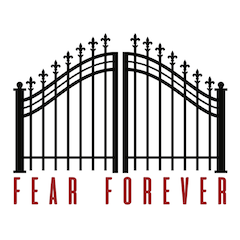

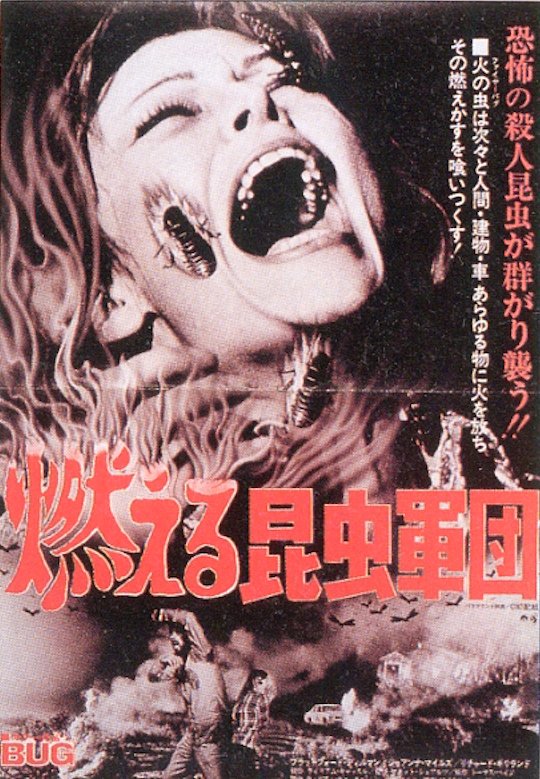
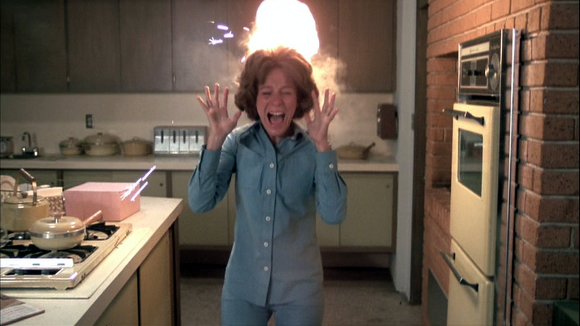

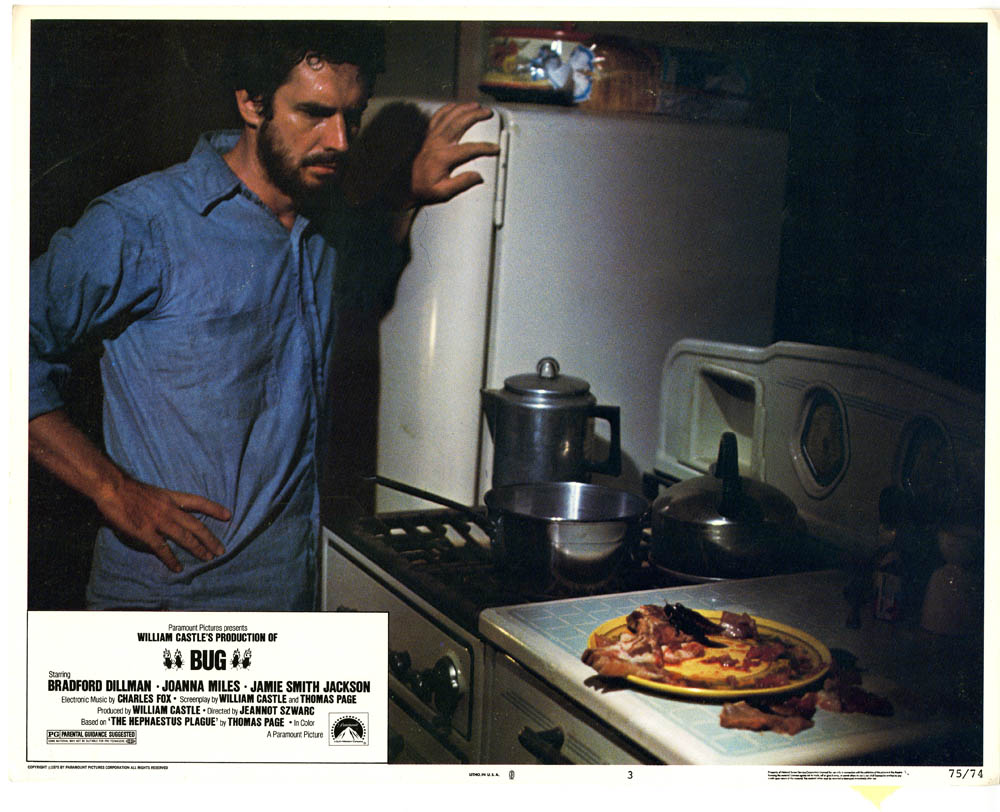


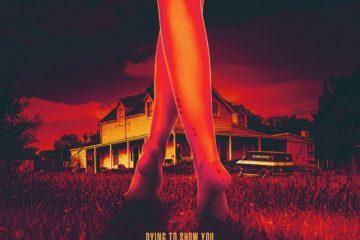
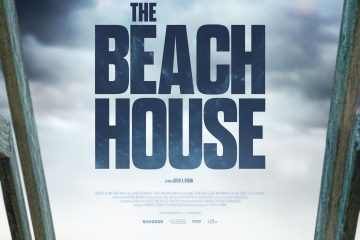
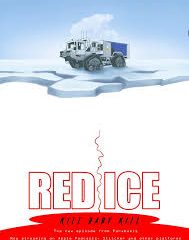
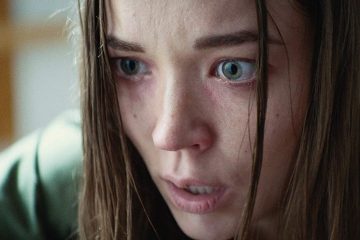
No Comment